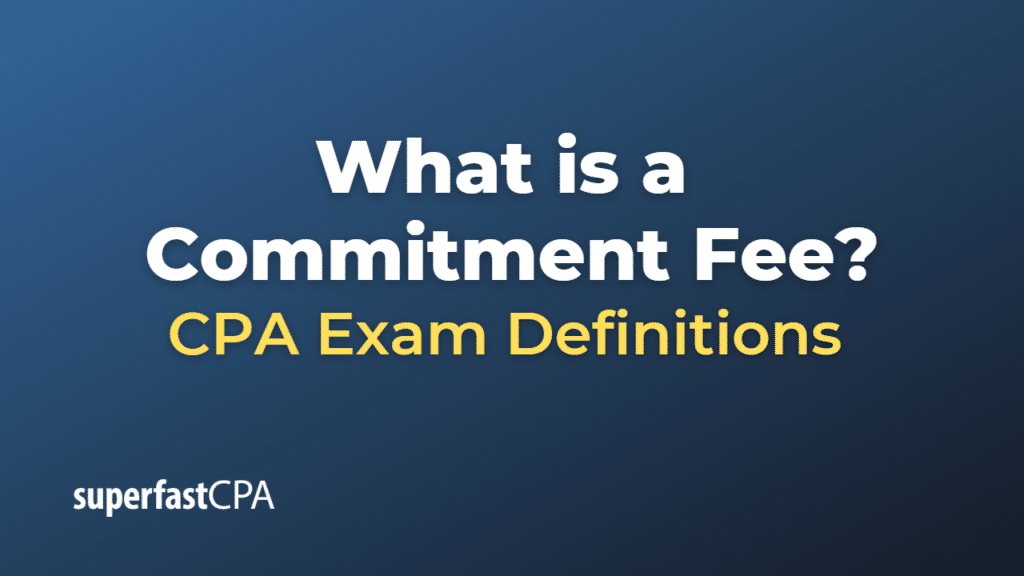Commitment Fee
A commitment fee is a fee charged by a lender to a borrower for keeping a line of credit or a loan facility available for the borrower to use. This fee is typically charged in situations where the lender commits to providing a certain amount of funds to the borrower, but the borrower is not required to draw down the entire amount immediately. The commitment fee compensates the lender for keeping the funds available and for the risk associated with committing to lend the money even if the borrower does not use the entire amount.
Commitment fees are commonly associated with lines of credit, construction loans, revolving credit facilities, and other types of loan agreements where the borrower has the flexibility to draw funds as needed up to a specified limit. The fee is usually calculated as a percentage of the undrawn portion of the credit facility and is generally paid periodically, such as quarterly or annually.
The purpose of a commitment fee is to:
- Compensate the lender for the opportunity cost of keeping the funds available for the borrower, as the lender could have otherwise invested or loaned the money to other borrowers.
- Incentivize the borrower to use the available funds more efficiently, as they are paying a fee for the undrawn portion of the credit facility.
- Cover the lender’s risk in committing to lend the money, as market conditions, credit risk, or the financial position of the borrower may change over time.
The specific terms and conditions of commitment fees, including the fee percentage and payment frequency, may vary depending on the lender, the type of credit facility, and the creditworthiness of the borrower.
Example of a Commitment Fee
Let’s consider a hypothetical example to illustrate the concept of a commitment fee in the context of a revolving credit facility.
Imagine that a manufacturing company, XYZ Corp., requires a flexible source of financing to manage its working capital needs. XYZ Corp. approaches Bank A and negotiates a revolving credit facility of $5,000,000. This facility allows XYZ Corp. to draw funds as needed up to the agreed limit.
Bank A agrees to provide the revolving credit facility but charges a 0.25% annual commitment fee on the undrawn portion of the facility. This fee compensates Bank A for keeping the funds available and for the risk associated with committing to lend the money even if XYZ Corp. does not use the entire amount.
Suppose that, at the end of the first quarter, XYZ Corp. has drawn $3,000,000 from the revolving credit facility, leaving an undrawn portion of $2,000,000. The commitment fee for the first quarter would be calculated as follows:
Commitment Fee = Undrawn Portion × Commitment Fee Rate × (Number of Days in the Quarter / Total Number of Days in the Year)
Commitment Fee = $2,000,000 × 0.25% × (90 / 365)
Commitment Fee ≈ $1,233
XYZ Corp. would pay Bank A a commitment fee of approximately $1,233 for the first quarter. If the undrawn portion of the revolving credit facility changes in subsequent quarters, the commitment fee would be recalculated accordingly.
This example demonstrates how a commitment fee compensates a lender for keeping funds available for a borrower and incentivizes the borrower to use the available funds more efficiently.













